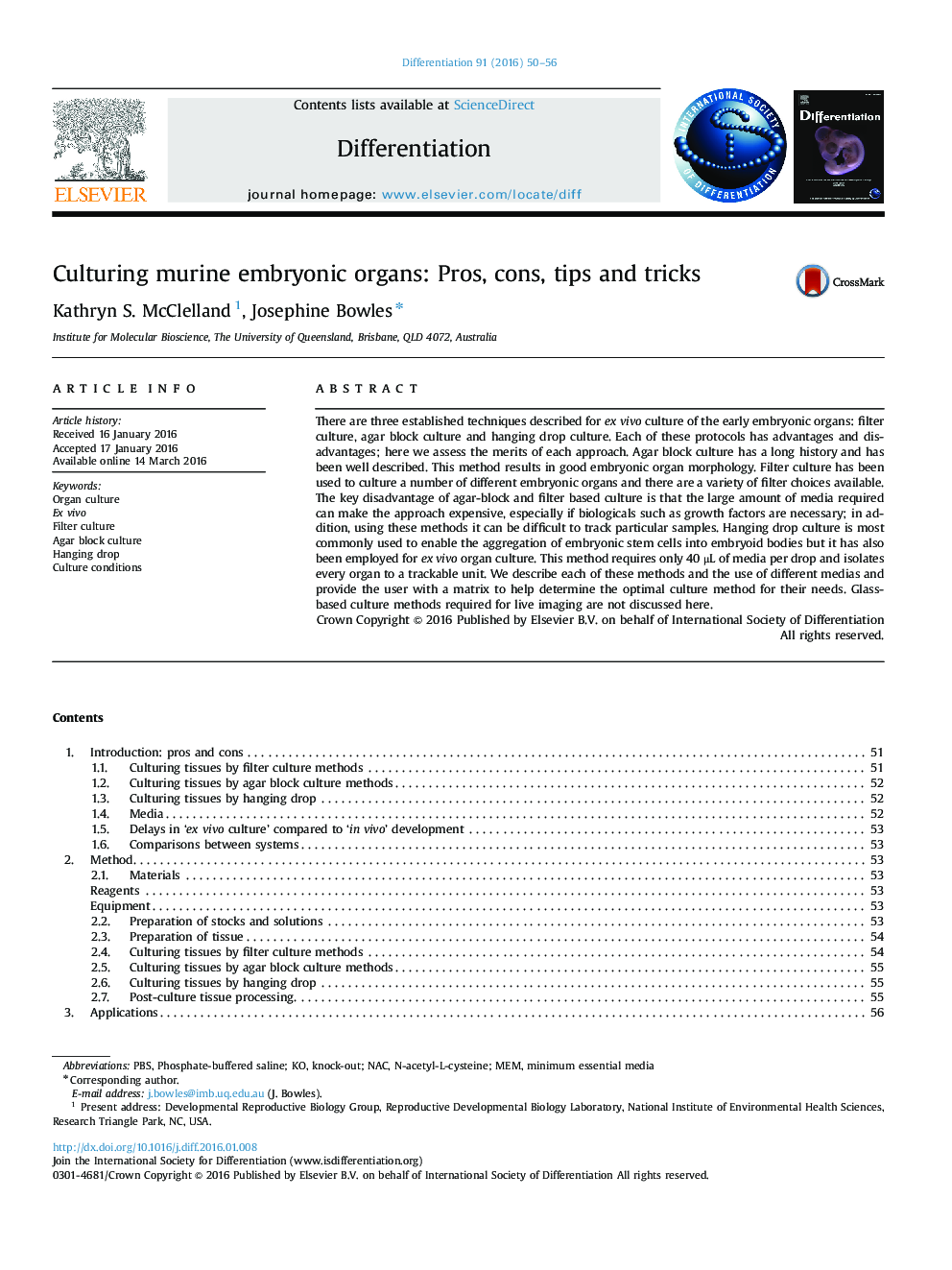| کد مقاله | کد نشریه | سال انتشار | مقاله انگلیسی | نسخه تمام متن |
|---|---|---|---|---|
| 2119280 | 1546788 | 2016 | 7 صفحه PDF | دانلود رایگان |
There are three established techniques described for ex vivo culture of the early embryonic organs: filter culture, agar block culture and hanging drop culture. Each of these protocols has advantages and disadvantages; here we assess the merits of each approach. Agar block culture has a long history and has been well described. This method results in good embryonic organ morphology. Filter culture has been used to culture a number of different embryonic organs and there are a variety of filter choices available. The key disadvantage of agar-block and filter based culture is that the large amount of media required can make the approach expensive, especially if biologicals such as growth factors are necessary; in addition, using these methods it can be difficult to track particular samples. Hanging drop culture is most commonly used to enable the aggregation of embryonic stem cells into embryoid bodies but it has also been employed for ex vivo organ culture. This method requires only 40 μL of media per drop and isolates every organ to a trackable unit. We describe each of these methods and the use of different medias and provide the user with a matrix to help determine the optimal culture method for their needs. Glass-based culture methods required for live imaging are not discussed here.
Journal: Differentiation - Volume 91, Issues 4–5, April–June 2016, Pages 50–56
